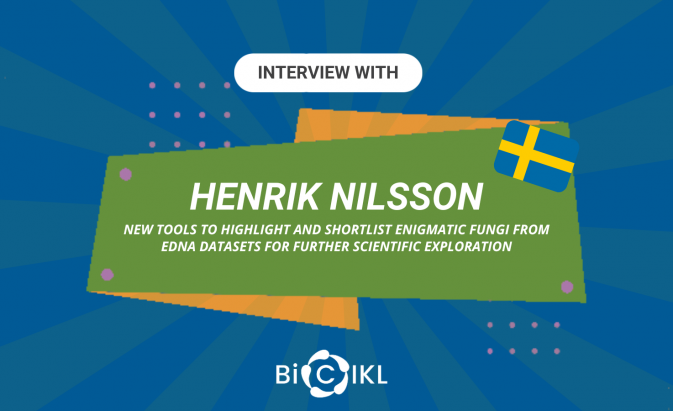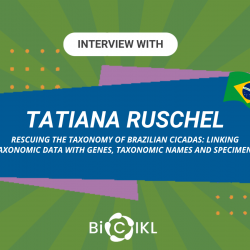Today we got to know the project presented by Henrik Nilsson, from the University of Gothenburg, a bit better. It’s called “New tools to highlight and shortlist enigmatic fungi from eDNA datasets for further scientific exploration” and it has been selected among others to be developed under the BiCIKL umbrella, thanks to the assistance of one of the participants in our EU-funded project.
How did you find out about BiCIKL and this call?
I have come to know BiCIKL as an initiative that thinks outside the box when it comes to biodiversity data and informatics. This is very much needed. As someone interested in fungal diversity as deduced from molecular data, it is very frustrating to constantly hit brick walls: biodiversity data are withheld or otherwise not available, or provided only in weird formats, or provided only to those who know who to ask, or provided only in part. We can’t go on like that, and I’m happy to see that BiCIKL is bringing about a change in the way we document biodiversity.
Why did you apply here? To address what challenge/need?
I applied to address fungal biodiversity challenges that are too large and difficult for me to solve, but that BiCIKL could. Specifically, I want to merge the Sanger sequencing-derived view of fungal diversity (UNITE/ENA) with the largely non-overlapping view of fungal diversity offered by metabarcoding (eDNA). To speed up the taxonomic characterisation of this biodiversity, I’d also like a system that highlights new and potentially undescribed species and higher groups of fungi, and I’d like users to be able to subscribe to their taxonomic affiliation by email/similar. These features will bridge the widening divide between eDNA biology and traditional systematics/taxonomy.
How would BiCIKL help in addressing this challenge?
BiCIKL brings together a range of powerful digital infrastructures in biodiversity informatics, including many with a direct bearing on fungal biodiversity. PlutoF (where UNITE manages its datasets) and ENA, in particular, are very relevant to our pursuit, and I’m hoping that our project can bring about a tighter collaboration between these groups. Jointly, they have the tools, data, and resources to address our concerns, much to the benefit of everyone for whom fungal biodiversity data is relevant. I also think that the results of the project will be useful also for ENA and UNITE through a taxonomic feedback loop.
Who will benefit from your project?
The project seeks to highlight the massive numbers of fungi and fungal groups that we are only now beginning to find through environmental sequencing. These fungi cannot be given formal Latin names at present, which is often taken as an excuse to dismiss them altogether from efforts in, e.g., systematics, ecology, and nature conservation. The project will put them on the agenda of everyone who is interested in fungal biodiversity and biodiversity at large, and it will provide them with the tools needed to study these fungi properly and integrate them in ongoing scientific and conservation efforts.
What would you consider a success for your project?
I will consider the project a success when we have the tools to study all fungi (regardless of whether they form fruiting bodies or not) – and when these tools are so straightforward to use that regular mycologists and citizens use them without thinking much about it. It does not make sense to effectively require a background in computer programming, and an extensive contact network of researchers privy to various secrets, to study certain (large!) parts of the fungal tree of life. When these fungi are integrated into our regular mycological routine, that’s when I know that the project succeeded.
How would you sum up your project, in a few sentences?
I hope that the project will make it straightforward to target the very large number of fungi that we are finding using environmental metabarcoding but that don’t behave in the way that we’re used to. They don’t seem to form fruiting bodies, and we largely fail to raise them in culture. These fungi, too, should be on the agenda of fungal taxonomy and systematics – indeed, everyone is interested in the dynamics of natural ecosystems. This project has the capacity to make that happen, and I’m very much hoping it will.



